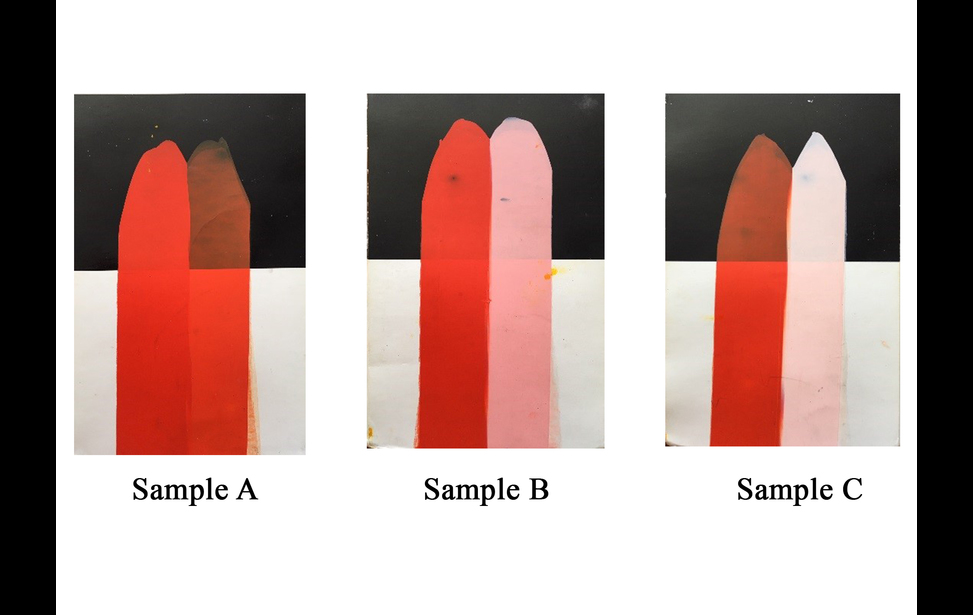Pigments and Color
What’s in a name?
This could mean anything. So, let’s zoom in on 'what’s in a color name'? What does the color name on a tube of color mean? Unfortunately, some artist colors have proprietary names that do not properly identify the actual color and even if the name is somewhat recognizable, there still can be some confusion. It is also unfortunate that there is no standard for color names, or is there? As artists, color is very important to us, and it is very important to be able to identify the colors we are using.
Here is the typical scenario: You walk into the art store to purchase a tube of color. The name on the tube is Sky Blue, but the brand you usually buy is out of stock. Unfortunately, the other brands do not have a Sky Blue. What do you do? You can either wait for it to be restocked or you can make an informed decision and leave with the correct color.
Traditionally, colors were named after the pigment used to make that particular color, but this is not always the case. New synthetic pigments are being manufactured to expand the color range and sometimes to replace (or be used as an alternative to) natural pigments for a wide range of reasons.
The focus of this article is make it easier for the artist to identify what pigments they are using. The following three examples will help us identify both the problem and the solution.
Example 1 - Burnt Sienna, named after the natural iron oxide deposits around the Tuscan town of Siena, Italy which are calcined (in other words baked) to produce this historical red oxide earth color. But there is also a synthetic red oxide and it too is also called Burnt Sienna. Unfortunately, they might have the same name, but they are two different colors. Do you know the difference? How can you identify which is the traditional red oxide as opposed to the synthetic red oxide?

Both examples are Burnt Sienna. Sample A is produced with the Natural Calcined Iron Oxide (PBr7,) and sample B is produced with a Synthetic Red Iron Oxide (PR101). Sample A is cooler and opaque while sample B is warmer and transparent. Please note: Synthetic Red Iron Oxide (PR101) is produced in a wide range of hue positions including a yellowish hue (Light Red, English Red, Mars Red, Venetian Red, & Red Oxide), a bluish hue (Indian Red) and violet hue (Mars Violet).
Example 2 - What do Lemon Yellow, Process Yellow, Hansa Yellow, and Arylide Yellow have in common? They are all the same color PY3, but given different names by the manufacturer. Unfortunately, when we get into the names of pastels, color pencils, watercolor pencils, markers and craft colors, we end up with a whole list of color names that could have the same pigment.
Example 3 - What is the difference between Cadmium Red Light and Cadmium Red Light Hue? Hue means color, but it has also become an identifier for a substitute of the original color. Cadmiums and Cobalt color are very expensive, so a hue is produced as a lower cost alternative typical in student grade colors. Hues are also produced for pigments that are no longer available or to replace colors made from less desirable pigments. In the examples that follow, the Cadmium Red Light is an artist quality color and Cadmium Red Light Hue is a student grade color.

Sample A show the difference between Cadmium Red Light (left) and Cadmium Red Light Hue (right). Cadmium Red Light (PR108) is a very bright opaque red-orange color while the Cadmium Red Light Hue (PR112/PY74) is transparent and produced by mixture of a Naphthol Red AS-D (PR112) and an Arylide Yellow (PY74).
Sample B is a drawdown of the Cadmium Red Light mass tone, and its tint (20:1 mixture with Titanium White) while sample C is a drawdown of the Cadmium Red Light Hue mass tone and its tint. Notice the difference in the tinting strength. The differences in tinting strength and opacity are significant and when mix with other colors will yield a different result.
Color Index Name/Color Index Number
Fortunately, in most cases, there is a solution to this problem of properly identifying the true color name. The raw pigments used in paints and drawing materials are given their own Color Index Number and Color Index Name. The Color Index Number is comprised of a 5-digit number, much like a zip code. On the other hand, the Color Index Name looks like this, PB29, which reads; pigment blue 29. This is the designation for Ultramarine Blue. So, no matter what name is given on the label. If the pigment listed, usually, on the back of the label or on the color chart is PB29, it is Ultramarine Blue. With that said, here a list of the Color Index Names.
So, the next time you hold a tube of paint in your hand, or a color chart, don’t take the color name for granted. Look for the Color Index Name and discover the true content of the that color.
Ed S Brickler is the author of Making Art: Materials & Techniques for Today’s Artist.
For more art materials tips and techniques articles and video’s, sign up for our newsletter on www.Thalo.com
Chartpak Inc. is affiliated with Thalo, LLC
For additional product information visit our websites:
http://grumbacher.chartpak.com/












